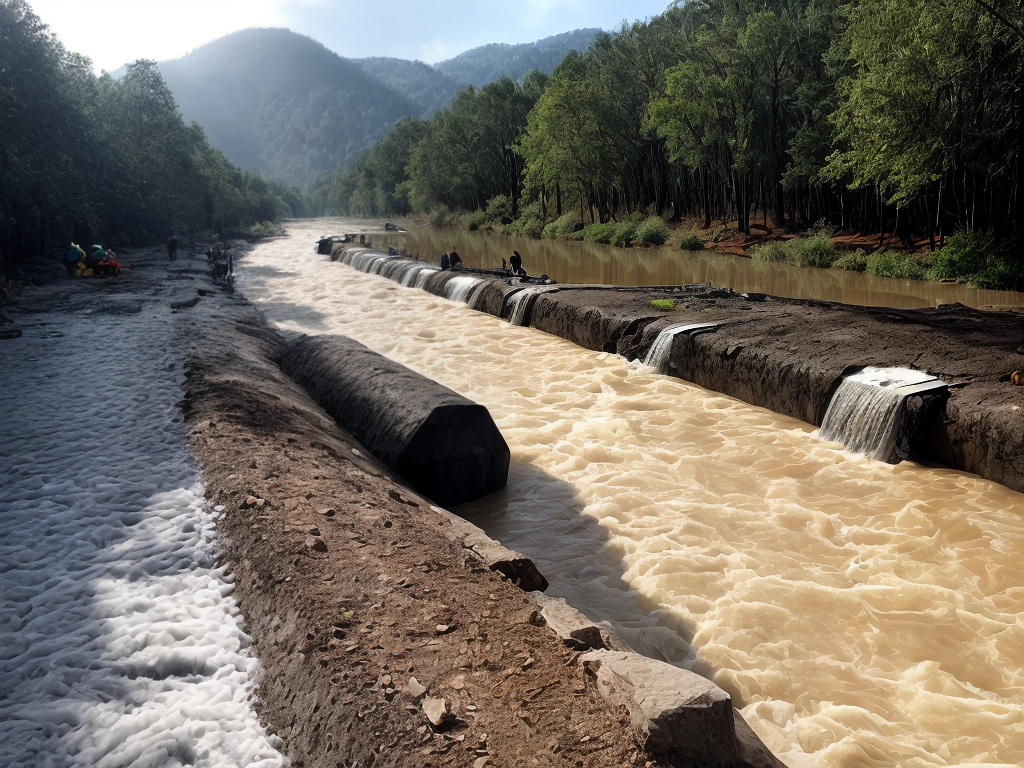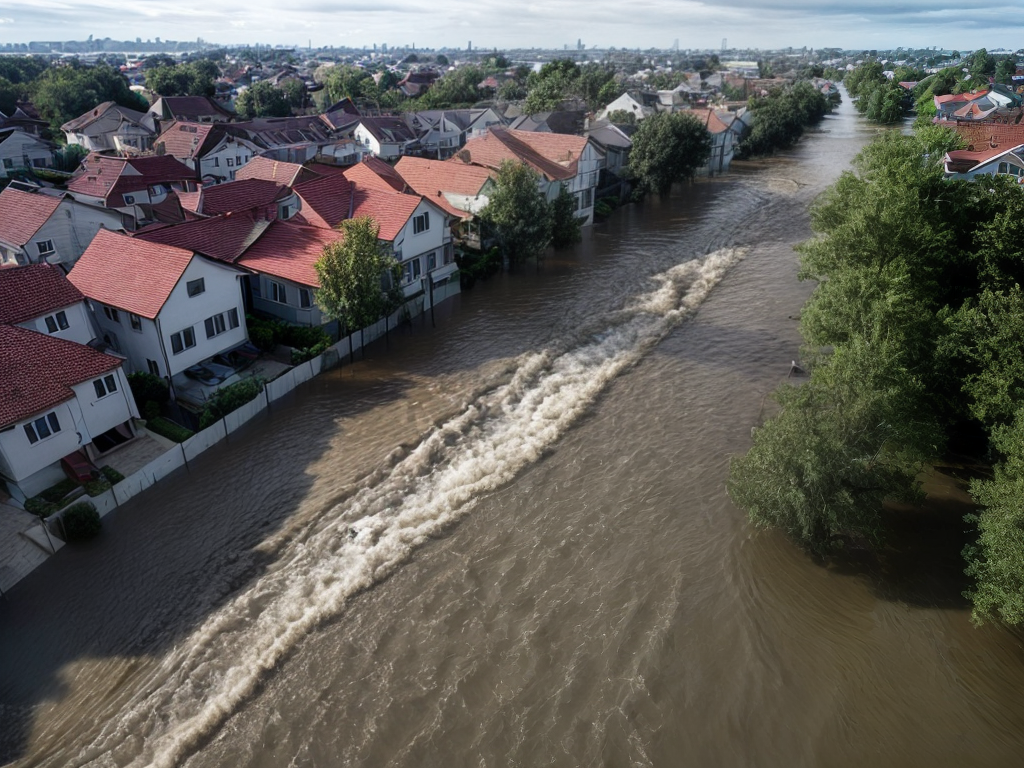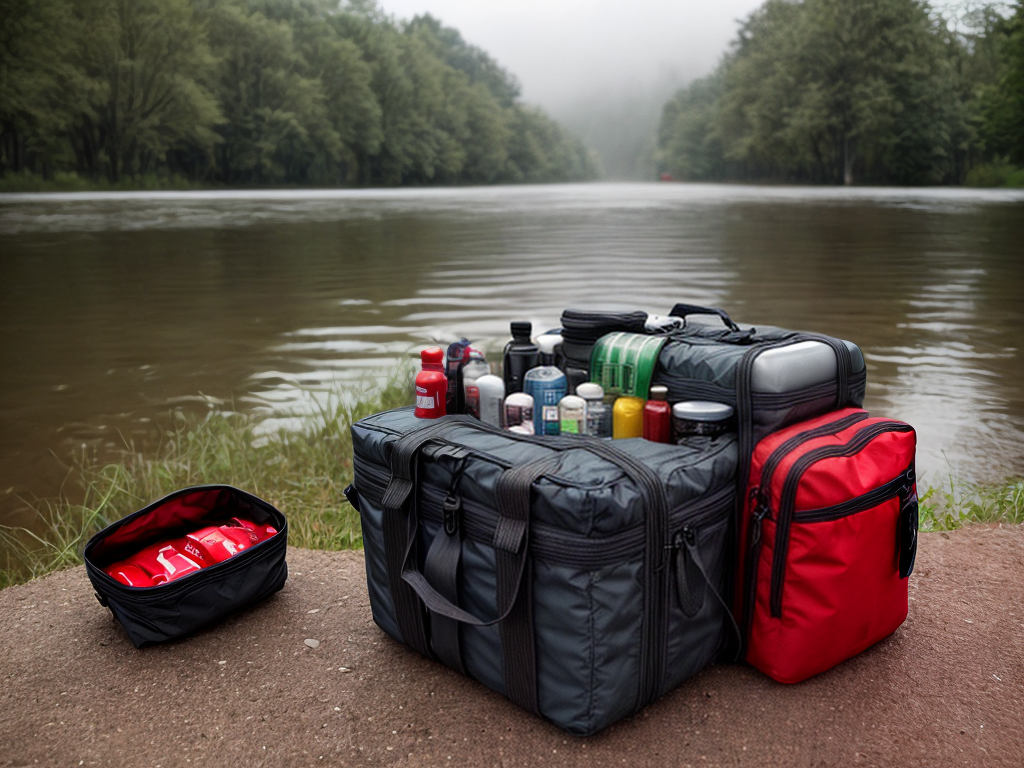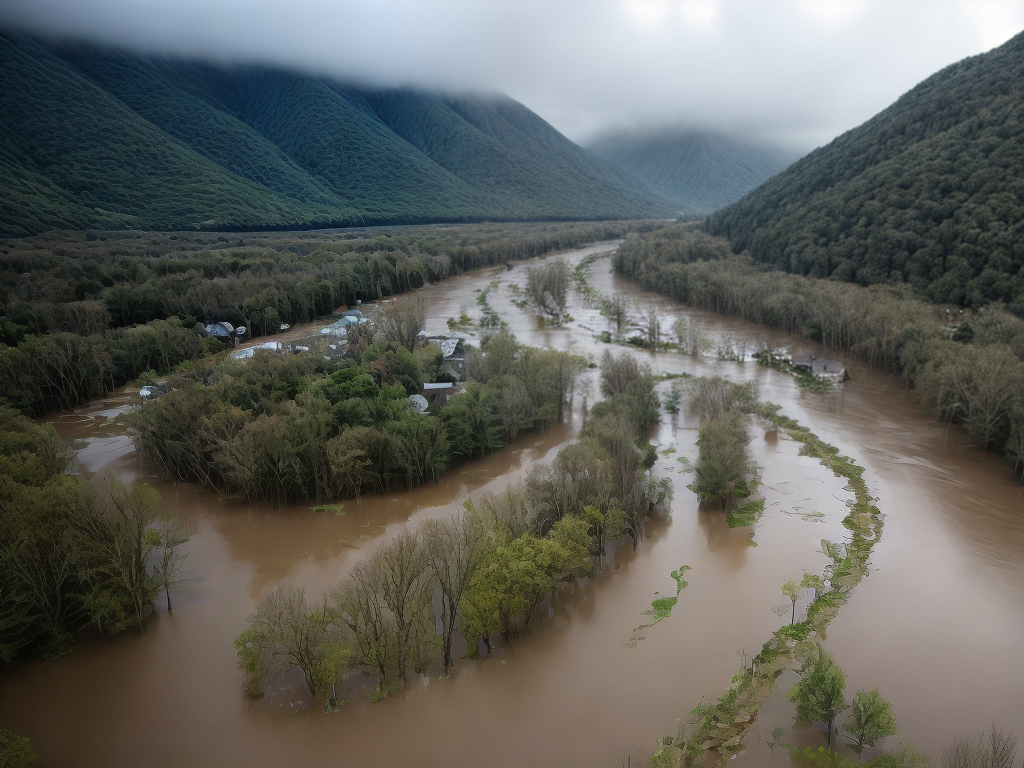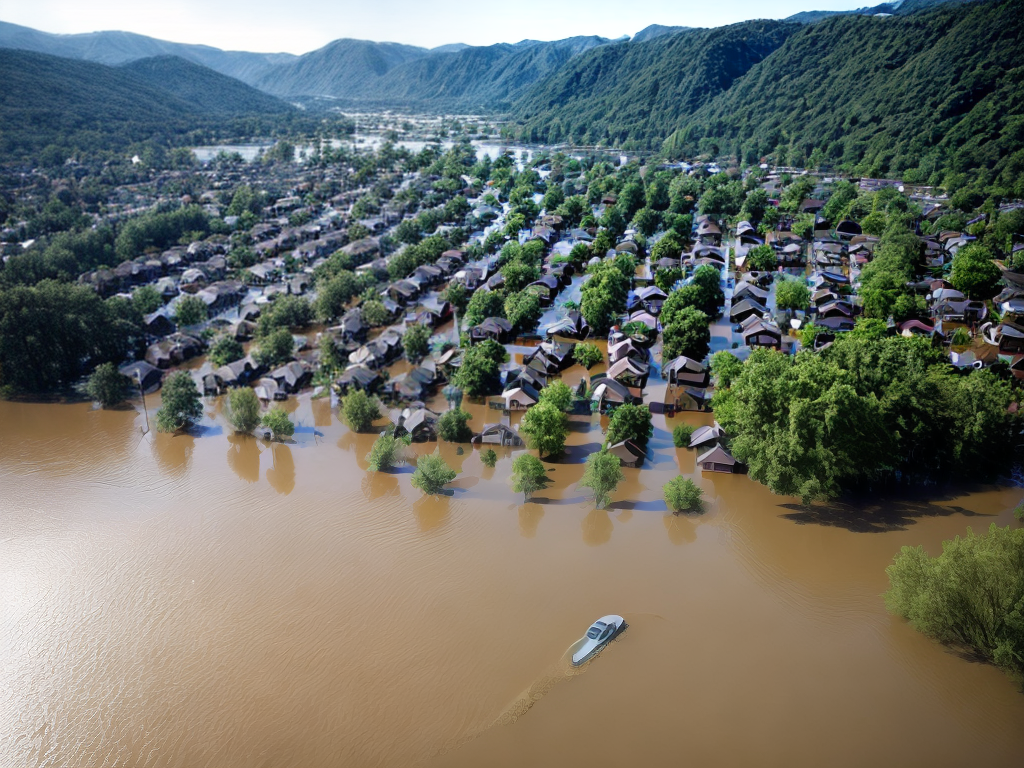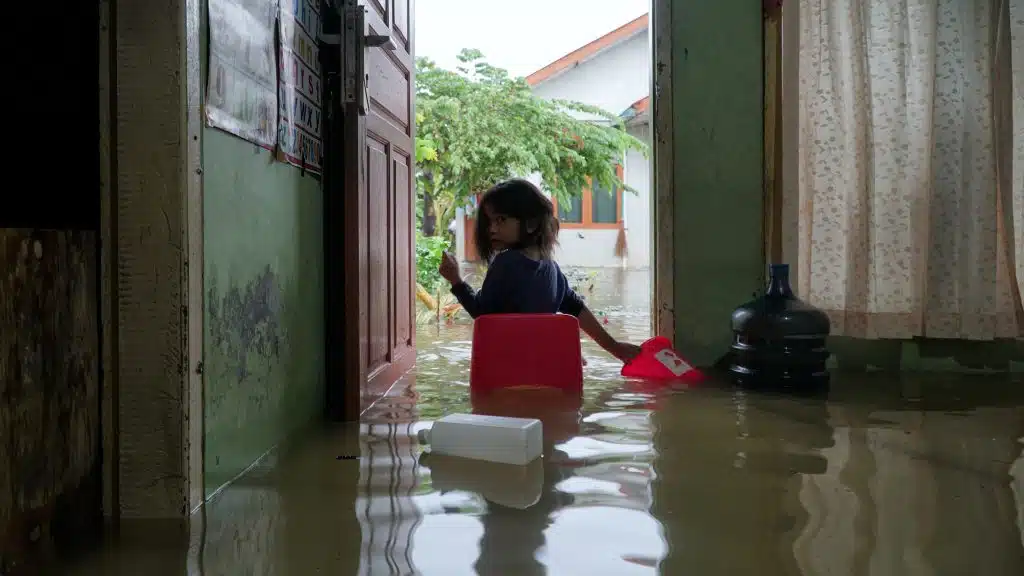
Introduction: The Importance of Flood Management
Flooding is one of the most destructive natural disasters, causing widespread devastation to lives, property, and infrastructure. As climate change leads to more extreme weather events, the risk and impact of flooding is increasing globally. Effective flood management is thus critical to protect communities and ensure resilience.
While flood management utilizes various structural and non-structural tools, submersible pumps play an invaluable yet often overlooked role. As “unsung heroes”, submersible pumps provide drainage and prevent waterlogging in flood-prone areas, safeguarding lives and infrastructure. This article will dive into the evolution, working, types, and applications of submersible pumps in flood management across urban, coastal, and agricultural contexts. It highlights the economic, social, and environmental benefits of utilizing submersible pumps, while also covering challenges and future innovations. Ultimately, it underscores why understanding submersible pump technology is vital for communities seeking comprehensive flood management.
The Rising Threat of Global Flooding
Floods are the most frequent natural disaster globally, causing widespread destruction. According to the UN, over 2.3 billion people were affected by floods from 1995 to 2015. Key factors driving increased flood vulnerability include:
- Climate change: Rising temperatures and extreme weather from climate change exacerbate flooding globally. It heightens the risk of heavy rainfall, hurricanes, cyclones, and sea level rise.
- Population growth: More people are moving into flood-prone areas, increasing exposure. It is estimated that 1.47 billion people globally now live in areas at high risk of catastrophic flooding.
- Urbanization: Impervious surfaces and inadequate drainage in cities lead to urban flooding, even from moderate rainfall. Nearly 96% of cities facing grave flood risk are in Asia and Africa.
- Infrastructure: Poorly planned infrastructure, lack of flood control measures, underinvestment in drainage and ineffective early warning exacerbate flood damage.
The human and economic toll of flooding is immense. For instance, the 2022 Pakistan floods displaced 33 million people and caused over $30 billion in damage. With climate change, such catastrophic events are likely to rise without urgent action on flood management.
Traditional Methods of Flood Management
Flood management relies on both structural and non-structural measures. Traditional methods include:
- Dams and levees: Water barriers to control river/coastal flooding.
- Dikes and floodwalls: Barriers along waterways to regulate flow and water levels.
- Diversions and floodways: Redirect excess water to alternate channels or storage areas.
- Reservoirs and detention basins: Store excess floodwater and control discharge.
- Culverts and canals: Regulate water flow and drainage.
- Catchment management: Watershed management through the greenery, wetlands, etc. to control runoff.
- Land use planning: Zoning floodplains and promoting adaptive constructions.
- Flood forecasting/warnings: Predicting and preparing for flood events.
- Disaster management: Evacuation, relief and rehabilitation programs.
However, these methods have limitations in fully preventing flooding and waterlogging, especially in urban areas. This highlights the need for supplemental drainage solutions.
Enter Submersible Pumps: A Game Changer
Submersible pumps emerged as a game-changing technology to rapidly remove floodwaters and provide drainage. Compared to traditional approaches, submersible pumps are:
- Portable: Can be easily deployed to any site.
- Versatile: Pump out both small and large-scale floodwaters.
- Rapid: Quickly drain floods, preventing damage.
- Cost-effective: Affordable to install and operate.
- Adaptable: Customizable for diverse applications like agriculture, mines, sewage, etc.
These advantages have made submersible pumps an essential tool for modern flood management across the world. Their work, evolution, and applications are explored next.
What is a Submersible Pump?
A submersible pump is a pump designed to operate submerged in the fluid it is pumping. Key features:
- Submerged pump motor with waterproof casing.
- The impeller attached to the motor shaft creates suction.
- Pump intake to draw in water.
- Discharge pipe and pump outlet to release water.
- Operates fully or partially submerged, independently or with wells.
Submersible pumps can efficiently pump large volumes of water as they eliminate suction limitations. They are extremely useful for dewatering flooded areas.
Historical Evolution of Submersible Pumps
The evolution of submersible pumps is intertwined with human’s age-old quest to pump water. Key milestones:
- Early water wheels, Archimedes’ screws used suction pumps from 200 BCE.
- Hand-operated force pumps emerged in the 1580s.
- 1846: Frenchman Edme-Jean Pauwels invented the first electric water pump.
- In the 1870s, windmill manufacturers began experimenting with submersible well pumps.
- In 1912, Pleuger Pumps pioneered enclosed impeller submersible pumps.
- 1930s: Improved waterproof motors expanded submersible pump usage for wells, mines, etc.
- 1960s: Manufacturing standardized for mass production.
- Today: Vast applications from industrial to flood control buoyed by advanced sensor and motor technology.
Submersible pumps thus evolved hand-in-hand with major technical leaps like electric motors and plastics, enabling their indispensable present-day usage.
Key Components of a Submersible Pump
While submersible pump types differ based on usage, key standard components include:
- Motor: A waterproof submersible electric motor provides power.
- Impellers: Rotating vanes generate suction to move water.
- Pump Housing: Watertight casing protects internal parts.
- Bearings: Guide and reduce friction on the motor shaft.
- Seals: Prevent water entry into the motor and maintain lubrication.
- Inlet Strainer: Filters debris to protect the impeller and motor.
- Outlet: Directs pumped water to discharge pipe.
- Cooling System: Removes heat from the motor.
- Sensors: Monitor pump operation.
- Cables: Connect the motor to a power source.
- Float Switch: Automatically turns the pump on/off based on water levels.
How Do Submersible Pumps Work?
Submersible pumps work using the principles of fluid dynamics and electric motors. The process consists of:
- Priming: The pump is filled with water.
- Suction: Rotating impellers create a pressure differential. Water is drawn into the suction inlet.
- Compression: Kinetic energy is added to the water by the impeller rotation.
- Discharge: The water exits the pump through the outlet at high velocity into discharge pipes due to the pressure created.
- Flow regulation: Sensors and float switches maintain optimal flow rates by controlling motor speed.
This creates continuous pumping action to drain flooded areas efficiently.
The Science Behind Pumping Water
Submersible pump working relies on scientific concepts like:
- Centrifugal force: Impellers spinning rapidly pushes water outwards by centrifugal action.
- Turbulence: Rotating impellers create turbulence to propel fluid.
- Priming: Self-priming pumps use air pressure differences for initial suction.
- Cavitation: Forming and implosion of water vapor bubbles during suction. Controlled to prevent damage.
- Viscous drag: Frictional forces acting on the fluid being pumped.
- Velocity head: Kinetic energy of moving water used in discharge.
- Hydrostatic pressure: Pressure exerted by static water, is essential for calculation.
Understanding these concepts helps optimize submersible pump design, and performance and prevent issues like cavitation damage.
Types of Submersible Pumps
Submersible pumps are classified based on different criteria:
By Function
- Drainage pumps: Designed for removing floodwater, sewage, or industrial wastewater. Various sizes and discharge capacities.
- Slurry pumps: For pumping mud, sludge, and other thick fluids containing solids. Handle abrasive particles.
- Clean water pumps: For clear water applications like wells, aquariums, and fountains.
- Borewell pumps: Heavy-duty pumps for installation inside water wells.
By Flow Type
- Centrifugal pumps: Impart velocity using centrifugal force from a rotating impeller. The most common type.
- Positive displacement pumps: Trap fluid and displace a fixed volume to create flow. Used for high pressure applications.
- Mixed flow pumps: Combine principles of centrifugal and positive displacement pumps.
By Stage
- Single-stage pumps: One impeller. Typically low to moderate head applications.
- Multi-stage pumps: Series of impellers. Generate high pressure and head.
By Motor Type
- Electric submersible pumps: The most common type, run by submersible electric motors. Available in various motor power.
- Hydraulic submersible pumps: Use pressurized hydraulic fluid to drive the motor. Limited applications.
- Air-driven submersible pumps: Use compressed air to drive the motor. Used in hazardous areas.
Advantages of Using Submersible Pumps
Submersible pumps provide the following key advantages for flood management:
- Rapid dewatering: Quickly drain large volumes of water through strong suction.
- Energy efficient: Submerged operation minimizes friction allowing high efficiency. Use 25-50% less energy than external pumps.
- Compact and portable: Lightweight, easy to install in tight spaces and move between sites.
- Requires minimal priming: Can be operated without additional priming equipment.
- Runs continuously: Can operate 24/7 for extended periods, ideal in emergencies.
- Easy to maintain: The motor and components are easily accessible for maintenance.
- Lower noise/vibrations: Quiet operation and lower noise pollution.
Energy Efficiency and Submersible Pumps
Given massive pumping needs globally, energy efficiency is a top priority in submersible pump design. Key efficiency considerations:
- Pump sizing: Matching pump capacity to requirements avoids wastage.
- Motor type: Premium efficiency IE3 or IE4 electric motors minimize losses.
- Pump configuration: Series or parallel set up based on head and flow rate needs.
- Variable Frequency Drives (VFDs): Regulate motor speed based on demand to save energy.
- Pump operation point: Match pump head to system head for optimal efficiency.
- Monitoring: Energy meters and current sensors provide data for efficiency improvements.
- Maintenance: Ensures smooth pump operation and avoids problems lowering efficiency.
Adopting these strategies can reduce submersible pump energy usage by 20-25%, providing major cost and environmental savings.
Durability and Longevity of Submersible Pumps
Submersible pumps are designed for extreme durability, enabling long working life. Key aspects enabling longevity include:
- Robust pump casing: Withstands submersion, impacts, and corrosion. Made of cast iron, stainless steel or hardened plastics.
- Overload protection: Prevents motor damage from dry running or overheating.
- Corrosion resistance: Motor housing, cables, and parts made of non-corrosive materials. Additional coatings add protection.
- Waterproofing: Shaft seals, casing gaskets prevent water ingress.
- Lubrication: Bearings use water-resistant lubricants. Automated lubrication systems in larger pumps.
- Clogging prevention: Inlet filters and cooling jackets prevent debris buildup.
- Bearing protection: Sleeve/ball bearings withstand radial and axial loads.
These enhance longevity. Proper installation and maintenance further extends submersible pump service life to over 10 years.
Safety Features of Modern Pumps
Safety is paramount for submersible pumps given their usage in flooded areas having live cables and movement risks. Key safety mechanisms include:
- Ground fault interrupters: Prevent electric shocks by shutting off power in case of short circuit/ground faults.
- Insulation monitoring: Detects insulation breakdown before dangerous electric leakage.
- Thermal monitors: Shut off pump due to overheating.
- Moisture sensors: Detect leaks and trigger pump shutdown.
- Cable strain reliefs: Avoid cable breakage.
- Emergency stop: Allow immediate shutdown in case of issues.
- Volute casing: Smoothly guides water to outlet, avoiding turbulence risks.
- Equipment lifting points: Allow safe pump installation and maintenance.
These enhance submersible pump safety for operators and equipment longevity. Strict compliance to electrical standards is critical.
The Role of Submersible Pumps in Flood Management
Submersible pumps play an indispensable role across the flood management spectrum:
Preparedness
- Installed at critical locations prone to waterlogging like underpasses, subways and low-lying areas.
- Sized adequately based on past flood data and modeling.
- Tested periodically to ensure functioning.
Emergency Response
- Rapidly deployed when floods hit to prevent inundation.
- High mobility aids fast relocation as water levels change.
- Run continuously with minimal supervision, providing immediate relief.
Rehabilitation
- Drain flooded sites like buildings, roads and fields post floods.
- Allow early reoccupation and prevent secondary damage from water.
- Portable pumps enable flexible drainage across sites.
They thus provide effective flood alleviation at all stages, from prevention to recovery.
Case Study: Flood Management in Urban Areas
Urban flooding is a major crisis globally, causing billions in economic losses annually. Adequate drainage infrastructure is often lacking in cities. Submersible pumps provide localized relief from urban flooding:
Chicago
- Historically flood prone, with heavy rains overwhelming Chicago’s drainage network.
- The city installed a network of underground reservoirs with submersible pumps across neighborhoods.
- Automated sensors activate pumps when water reaches a threshold, preventing road and basement flooding.
- Reduced flood damage by over 80% in target areas.
Bangkok
- Severe traffic congestion during monsoons due to undercapacity drains flooding roads.
- Deployed movable pump stations running diesel-powered submersible pumps to drain problem areas.
- Pumps divert floodwaters into canals and temporary lagoons.
- Provided 50% quicker drainage, easing mobility across the city.
Targeted submersible pump usage thus enables effective urban flood management.
Case Study: Agricultural Flood Management
Flooding can be catastrophic for agriculture, destroying crops and causing soil erosion. Submersible pumps enable quick drainage from inundated farmland.
Indonesia
- Vast lowland rice fields prone to flooding during monsoons.
- Temporary diesel submersible drainage pumps deployed rapidly when floods hit.
- Pumps channel water quickly into irrigation canals and rivers.
- Prevented $500 million in crop losses during the 2020 monsoon for 1.4 million farmers.
United States
- Periodic flooding from rivers and hurricanes impacts Midwest farmlands.
- Permanent drainage pumping stations dot agricultural land, with backup generators.
- When flooding occurs, submersible pumps rapidly drain fields.
- Drainage pumps reduced crop insurance claims by 28% over a 5 year period.
Submersible drainage pumps thus play a vital role in shielding agriculture from flood damage worldwide.
Case Study: Coastal Area Flood Management
Coastal regions face increased threats from storm surges and rising sea levels. Submersible pumps enable rapid dewatering after coastal flooding.
The Netherlands
- 25% of land below sea level. Complex dikes, dams and pump systems protect against flooding.
- Over 3000 drainage pumping stations operate along the coast and inland lowlands.
- Massive pumping capacity of over 100,000 kW, much of it portable submersible pumps.
- The world’s largest drainage pumping facility can discharge 210,000 liters/second.
- Holistic water management containing floods and benefiting agriculture and communities.
New Orleans
- Devastating flooding during Hurricane Katrina due to storm surges overwhelming levees.
- Now protected by the Hurricane and Storm Damage Risk Reduction System costing $14.5 billion.
- Network of dams, floodwalls and 836 massive submersible drainage pumps throughout the region.
- Pumping stations key in draining storm surge floodwaters rapidly.
Coastal regions globally thus rely on heavy-duty submersible pumps as a bulwark against flood damage.
Submersible Pumps in Disaster Response
Given their lightweight and mobility, submersible pumps are a vital tool for emergency response after major flooding events:
- High-volume portable diesel-driven pumps provided quick dewatering in urban areas inundated after cyclones in Mozambique in 2019.
- Following Hurricane Harvey, the US Army Corps of Engineers deployed over 400 submersible pumps to drain flooded Houston neighborhoods. The pumps removed 118 million gallons of water in four days.
- Hundreds of pumps were airlifted after catastrophic flooding in Pakistan in 2010, draining entire villages rapidly to facilitate relief efforts.
- Submersible pumps allowed the quick draining of the main subway stations within days after superstorm Sandy flooded New York City’s metro system.
By enabling rapid drainage of floodwaters, submersible pumps are a critical tool for emergency response and recovery after major flooding events worldwide. Their portable nature makes them extremely versatile in disaster situations. Proper planning to identify pump requirements and standby inventories can help enhance response speed and efficiency after floods.
Maintenance and Care for Submersible Pumps
Proper maintenance is vital for submersible pump longevity and performance. Recommended maintenance procedures:
- Regular inspection of pump components like cables, float switches and impellers. Replacement of worn parts.
- Testing insulation resistance and continuity of cables.
- Checking seals, casing gaskets and lubrication. Replenishing lubricant.
- Cleaning and replacing inlet screens/filters if clogged.
- Flushing pump by running clean water if used for slurry/wastewater.
- Checking for pump overheating and abnormal vibration/noise.
- Visual inspection of pumped liquid for detecting issues.
- Verifying discharge flow rate equals rated pump capacity.
Ideally maintenance checks should be monthly, with more detailed annual inspections. Handling pumps with care during installation/transport also prevents damage.
Troubleshooting Common Pump Issues
While submersible pumps are generally reliable, common troubleshooting issues include:
Pump failure to start:
- Power failure
- Faulty electrical cable
- Malfunctioning float switch
- Jammed impeller
Reduced discharge/flow:
- Worn impeller
- Clogged screens
- Leak in suction pipe
- Excessive pump height above water level
Pump overheating:
- Low water levels
- Defective bearings
- Impeller damage or jam
Pump leakage:
- Compromised casing seal
- Shaft seal damage
- Crack in casing
Excessive noise/vibration
- Damaged bearings
- Cavitation
- Unbalanced or damaged impeller
Checking for these root causes helps troubleshoot and prevent major pump failures.
Innovations in Submersible Pump Technology
Ongoing innovation focuses on improving efficiency, durability and functionality of submersible pumps:
- New impeller designs and materials like polyurethane to enhance performance and prevent wear.
- Cutting-edge variable speed/frequency drives to match motor speed to demand.
- Advanced sensors for remote monitoring of pumps and real-time diagnostics.
- Rugged polymers, coatings and alloys to improve corrosion and abrasion resistance.
- Advanced computational fluid dynamics modeling to optimize internal hydraulics.
- Internet-of-Things enabled “smart pumps” that integrate with broader water management systems.
These innovations will expand submersible pump applications in flood control and beyond.
Environmental Considerations and Submersible Pumps
While providing flood management benefits, submersible pumps’ environmental impacts must also be managed:
- Noise/Vibration: Can disturb wildlife and communities. Installing pumps away from inhabited areas helps. Sound-dampening enclosures can further reduce noise.
- Emissions: Diesel pumps generate significant emissions. Switching to solar, electric or hybrid drives reduces the carbon footprint.
- Discharge: Prevent ecological damage by discharging pumped water into suitable drainage channels, rivers or storage ponds so flooding and erosion risks are minimized.
- Oil/Chemical leakage: Prudent pump maintenance and containment strategies prevent water contamination.
- Debris: Inlet screens, filters and settling tanks prevent debris discharge back into the environment.
With due care, submersible pumps can enable flood management while also protecting nature and communities.
The Economic Impact of Effective Flood Management
Beyond immediate damage costs, flooding has major cascading economic impacts like:
- Disrupted industrial/commercial activity
- Reduced agricultural outputs
- Lower tourism due to damaged infrastructure
- Increased healthcare costs
- Loss of incomes and livelihoods
- Decline in property values
- Higher insurance premiums
Studies estimate that globally, one dollar invested in flood prevention saves seven dollars in economic losses. By rapidly draining floodwaters, submersible pumps minimize these wide-ranging macroeconomic impacts of floods. Further, quick drainage enables faster rehabilitation and business continuity. Compared to conventional drainage methods, submersible pumps thus provide superior flood protection at lower total cost.
Submersible Pumps in Residential Settings
Submersible pumps are ubiquitous across homes, buildings and apartments globally, providing the following residential applications:
Water supply
- Borewell/well water extraction for domestic usage and lawn irrigation.
Wastewater removal
- Sewage and sanitary waste removal.
- Drainage of flooded basements, and structures.
Swimming pools / water features
- Water circulation and filtration.
- Wave/waterfall creation.
Heat pumps
- Geothermal heating/cooling systems.
Proper pump sizing, placement and maintenance ensures their effective usage in residential settings. Importantly, submersible sump pumps in basements prevent costly structural water damage during floods.
Industrial Applications of Submersible Pumps
Dewatering, fluid transfer and wastewater management needs make submersible pumps indispensable in industries like:
Construction: Dewatering of foundations, excavations, tunnels and mines. Slurry transfer. Site drainage.
Oil/Gas: Removing water from drill holes to enable extraction. Wastewater management. Pipeline drainage.
Energy: Cooling water circulation in power plants, nuclear reactors. Hydroelectric systems.
Maritime: Bilge pumping, ballast transfer, firefighting in ships and ports.
Mining: Draining mines, pumping process slurries, tailing management.
Wastewater: Sewage, industrial effluent and stormwater pumping. Treatment plant circulation.
Rugged submersible pumps enable smooth functioning across industrial processes, including during times of flooding.
The Role of Submersible Pumps in Infrastructure Projects
Major infrastructure projects often face flood risks at all stages. Submersible pumps provide critical dewatering capabilities:
Construction stage
- Dewatering foundations, tunnels and underground structures
- Draining water from cofferdams at bridge construction sites
- Protecting active work areas from flood inundation
Commissioning
- Draining flooded spaces like basements when activating projects
- Removing trapped rainwater/wastewater from pipelines
Operation
- Preventing waterlogging in metro stations, underground facilities
- Backup drainage for dams, canals, and other water infrastructure
By facilitating execution and protection from floods, submersible pumps enable resilient infrastructure worldwide.
Ensuring Quality: Standards and Certifications
Given submersible pumps’ critical uses, quality benchmarks through standards and certifications ensure reliability:
- Pump construction standards: Guidelines on design, material and testing from Hydraulic Institute, ISO, etc.
- Electrical standards: IEC, NEMA and other standards for pump motor, cables and controls for safety.
- Performance testing: Hydraulic Institute methods for field testing of pumps to match rated specifications.
- Manufacturing quality: ISO 9000 family standards instituted in factories.
- Product certification: BIS, CE marking, ETL/CSA etc. certify design as per the latest standards.
- Environmental approval: Compliance to regulations on noise, emissions etc.
Specifying certified pumps manufactured under robust quality standards minimizes performance risks and safety hazards.
The Global Market for Submersible Pumps
The global market for submersible pumps is estimated at $15 billion currently and poised to grow at over 5% CAGR until 2026, buoyed by:
- Increasing need for wastewater management given population growth and urbanization, especially in Asia.
- Rising industrial investments demanding process water management.
- Surging oil/gas and construction sectors require dewatering solutions.
- Infrastructure development in emerging economies is dependent on reliable pumps.
- Increasing occurrence of flooding requiring drainage pumps.
Top recipients include China, India and Middle Eastern countries undergoing development. Innovation and acquisitions also mark the competitive submersible pumps industry.
Leading Manufacturers of Submersible Pumps
Some leading global manufacturers known for quality and reliability include:
Xylem: One of the world’s largest pump companies. Offers the full gamut of residential, commercial and heavy-duty pumps globally.
Grundfos: Danish company specializing in innovative pumping solutions like solar-powered submersible pumps.
KSB: German pump and valve manufacturer with a large portfolio of energy-efficient pumps.
Wilo: Multinational company headquartered in Germany with a focus on smart pumps.
Sulzer: Swiss company manufacturing heavy industrial pumps. Also provides pump servicing.
Kirloskar Brothers: Leading Indian pump manufacturer exporting globally. Also make motors and valves.
Shimge: Major Chinese manufacturer exporting inexpensive pumps worldwide.
Choosing quality pumps from reputed companies ensures reliable flood management capability.
Installation Best Practices
Correct installation is vital for effective functioning and longevity of submersible pumps. Key guidelines include:
- Site selection above floodwater levels with good approachability.
- Foundation design (concrete base, anchor bolts) to prevent movement and vibration.
- Proper entry/exit provisions for pumped water without backflow.
- Suction piping installations as per standards to enable smooth flow and prime.
- Discharge piping is able to handle maximum pump pressure and flows.
- Electrical wiring and earthling according to safety norms.
- Controls and backup power supply as per application.
- Testing pump functioning before full commissioning.
Adherence to manufacturer service manuals and standards during installation prevents issues and undue wear-and-tear.
The Future of Submersible Pumps in Flood Management
While already playing a major role, submersible pumps are poised to become even more vital for flood management in the future due to:
- Worrying climate change trends like sea level rise and extreme rainfall demand increased pumping capacity.
- More extreme weather events like tropical cyclones.
- Exponential urban growth requires extensive drainage infrastructure, where submersible pumps are ideal.
- New flood management systems are designed to take pumping requirements into account from the start.
- Innovations like connected “smart pumps”, advanced materials, and hybrid drives expanding capabilities.
- Renewed policy focuses on flood resilience, enabling investments into pumped drainage.
- Public awareness on stormwater management and flood protection at the individual level.
Submersible pumps are thus on track to become the first line of defense against floods globally.
The Role of Government in Promoting Pump Usage
Effective governance has a major role in mainstreaming submersible pumps for flood management:
- Allocating budgets for procuring pumping infrastructure at scale.
- Creating national/regional plans itemizing pumping needs.
- Conducting pumping system audits of flood-prone areas.
- Streamlining cross-department coordination on pumping projects.
- Running capacity-building programs on pump sizing, technology, etc.
- Enabling policies for pump-based drainage mandates in construction.
- Providing subsidies/incentives to citizens for installing pumps.
- Funding R&D on novel pumping methods and technologies.
- Developing partnerships with manufacturers of made-to-order pumps.
Farsighted public policy and leadership can thereby drive the adoption of submersible pumping as a lynchpin of flood resilience.
Community Initiatives and Submersible Pumps
While governments undertake large schemes, citizen participation also aids pump adoption:
- Awareness campaigns: Highlight the benefits of drainage pumps for households/businesses.
- Insurance incentives: Rebates for installing backup pumps in basements/buildings.
- Drills: Community-run mock flood response exercises to deploy pumps. Helps preparedness.
- Crowdfunding: Pool funds through civic tech platforms to donate pumps to vulnerable neighborhoods.
- Circulation: Share surplus pumps between community members/groups when floods strike.
- App-based monitoring: Citizens upload real-time pump deployment data during floods to optimize response.
- Green infrastructure: Installing rain gardens, bioswales, and retention ponds to reduce pump loads.
Bottom-up civic action is thus crucial to make pumping accessible, efficient and inclusive.
Training and Skill Development for Pump Operators
The availability of trained personnel is essential for proper pump operations and maintenance. Education programs should cover:
- Pump selection principles for required head and flow.
- Installation methods and safety.
- Pump hydraulics and troubleshooting.
- Routine maintenance procedures like impeller replacement.
- Monitoring pumping performance.
- Managing ancillary systems like power backup.
- Adherence to electrical safety norms.
- Record-keeping of maintenance logs.
- Inventory and supply chain management of spares.
- Contingency planning for various flood scenarios.
- Refresher courses on new technologies.
Multipronged training equips personnel to leverage submersible pumps fully for flood resilience.
Health and Safety Considerations
Pump operators must remain vigilant regarding health/safety:
Electrical hazards
- Ensure cabling, insulation, and earthing standards compliance.
- Beware of contact with water when energized.
- Never override electrical safety mechanisms.
Pump cavitation risks
- Wear protective gear given the risk of damage from violent implosions.
- Reduce chances of cavitation through system design.
Noise
- Continuous exposure to loud pump noise can impair hearing.
- Use sound-dampening techniques and ear protection.
Pathogen exposure
- Take precautions when pumping biologically hazardous floodwaters.
- Disinfect equipment properly after sewage/contaminated water pumping.
Musculoskeletal injuries
- Avoid manual lifting and awkward postures when handling pumps.
- Employ automated lifting aids.
Staying alert and using common sense helps secure well-being while operating submersible pumps.
The Environmental Impact of Pump Discharge
While pumps prevent floodwater stagnation, the discharge can also have detrimental environmental effects if not managed prudently:
- Erosion: High-velocity pumped water can damage riverbanks, soils and coastal bedrock over time. Energy dissipating outlet structures help.
- Downstream flooding: If the discharge rate exceeds the carrying capacity of receiving water bodies, it can overwhelm drainage and cause floods elsewhere. Coordinated release helps.
- Ecosystem disturbances: Aquatic life can get disrupted, both where water is extracted and where discharged. Fish screens and regulating timing/location discharged helps minimize harm.
- Pollutants: If floodwaters or wastewater contain industrial/agricultural contaminants, directly pumping them into water bodies spreads pollution. Treatment beforehand is thus recommended.
- Invasive species spread: Draining water from one area to another risks spreading invasive flora/fauna damaging to the local ecology. Filtration, quarantine and chemical treatment help restrict spread.
With due diligence on placement, treatment and discharge norms, submersible pumps can enable judicious environmental management alongside flood protection.
Submersible Pumps in Drought Management
Beyond flood control, submersible pumps also aid drought management through:
- Groundwater extraction: Submersible borewell pumps provide precious water for domestic, agricultural and industrial needs when reservoirs and rivers run dry.
- Drilling bore wells: Powerful submersible rig pumps enable drilling new/deeper wells during drought emergencies.
- Irrigation: Pressurized water transfer from borewells and open sources to fields using submersible pumps. Prevents crop loss.
- Water tankers: Rapid filling of water tankers using heavy-duty submersible pumps for distribution.
- Dewatering: Keeps critical industrial/mining activity going by pumping out seepage water from deep mine shafts.
- Firefighting: Enables rapid sourcing from rivers and ponds for fire trucks/helicopters to battle wildfires during droughts using attached submersible pumps.
Submersible pumps are thus vital to mitigate the endless thirst and damages inflicted by droughts.
The Interplay Between Climate Change and Pumping Needs
Climate change exacerbates both flooding and water scarcity risks, necessitating expanded pumping capacity:
- Sea level rise and extreme rainfall cause more inland and coastal flooding, increasing dewatering needs.
- Hotter temperatures and altered precipitation patterns result in more frequent and severe droughts. This boosts agricultural and residential pumping requirements.
- Wildfires during heat waves require emergency firefighting pumping from new water sources.
- New flood patterns require adapting pump specifications and locations.
- Borewells for drought relief must reach deeper groundwater levels as aquifers deplete.
Climate change therefore demands urgent investment into submersible pumping infrastructure worldwide to meet the twin challenges of excess and deficit water.
Funding and Financing Pump Projects
Submersible pump projects require significant capital expenditure and benefit from diverse financing mechanisms:
- Government funding: Direct budgets and bank loans taken by local municipalities. Enables large-scale implementations.
- Private sector: Private drainage/water utility companies own and operate pumping infrastructure.
- Multilateral agencies: Development banks provide concessional financing for pumps and drainage.
- Green bonds: Bond issuances focused on climate adaptation like pumping infrastructure.
- Impact investments: Investments into pump startups and technology based on environmental/social returns.
- Insurance: Usage and premium-based discounts for pump installation. Lowers Liability and payouts during floods.
- Community financing: Crowdfunding, microloans and other grassroots methods to acquire pumps. Boosts participation.
Blending funding options aids optimal and equitable pump deployment for flood-prone communities everywhere.
Case Study: Post-Flood Rehabilitation
Rapid rehabilitation after major floods relies critically on submersible pumps. A real example:
Kerala Floods, 2018
- The worst floods in a century submerged the entire state during monsoons. Over 400 died and economic loss exceeded $5 billion.
- Vast areas including 14,000 km of roads and hundreds of thousands of homes remained inundated for weeks after floods receded, hindering recovery.
- The state government deployed a massive fleet of portable diesel and electric submersible pumps along with generators. Local self-help groups managed micro-pumping units.
- Strategic drainage rapidly lowered water levels in flooded buildings/roads. Paved the way for cleaning and restoration.
- With power supply disrupted, the pumps’ ability to run off diesel and solar generators proved invaluable.
- The scale and portability of pumping machinery enabled localized drainage across remote villages and hilly regions.
- Dewatering within weeks after floods was vital for resuscitating normal life and livelihoods. Pumping complemented wider rebuilding initiatives.
Kerala’s rehabilitation showed how quickly marshaling submersible pumps post-floods can mitigate suffering and accelerate recovery.
The Social Impact of Effective Pumping
Beyond economic effects, properly leveraging submersible pumps provides major societal benefits:
- Prevents displacement: Rapid drainage allows people to continue occupying homes/land post-floods instead of relocation.
- Maintains connectivity: Clearing flooded roads quickly restores access to jobs, schools, healthcare, aid supplies, etc.
- Curbs waterborne illnesses: Stagnant waters are a hotbed of infections. Pumping out floodwater reduces epidemics.
- Psychological relief: Draining flooded homes/communities quickly alleviates trauma. Restores normalcy.
- Social cohesion: Communities unite around pumping efforts during floods, building solidarity.
- Support livelihoods: Enables early restoration of jobs, businesses, and agriculture post-floods.
- Protects marginalized groups: Prioritizing pumps for remote and vulnerable communities prevents disproportional impact.
Through such social benefits, drainage pumping meaningfully uplifts community resilience beyond just flood water removal.
Submersible Pumps in Developing Nations
Many developing countries face severe challenges with seasonal flooding, especially in densely packed urban settlements lacking drainage infrastructure. Submersible pumps’ advantages make them ideal solutions:
Cost
- Affordable capital and maintenance costs compared to large drainage projects. Suitable for limited budgets.
Rapid deployment
- Portability enables quick installation when/where flooding occurs without major fixed infrastructure.
Adaptable scaling
- Sized for localized needs. Additional pumps can be added modularly later.
Ease-of-use
- Simple design and operation suit basic technical skills. Enables community-managed drainage.
Off-grid capability
- Often necessary given power reliability issues.
Thus, developing country contexts amplify the usefulness of submersible pumps for inclusive and sustainable flood management.
Challenges in the Adoption of Submersible Pumps
Despite the benefits, wider adoption of submersible pumps faces barriers like:
- High upfront costs: Purchase and installation costs deter cash-strapped municipalities.
- Lack of expertise: Precise pump sizing and maintenance require specialized technical skills often unavailable locally.
- Grid power reliability: Frequent electricity disruptions impact pump effectiveness and force increased diesel usage.
- Difficult terrains: Remote, rocky, or mountainous areas pose access issues for pump installation and maintenance.
- Vandalism and theft: Pump components left unattended, especially at night, are prone to human interference and theft.
- Technological maturity: Developing nations often still employ outdated pump technologies needing upgrades.
Targeted financing, capacity building, infrastructure development and appropriate solutions tailored to local contexts can help overcome these adoption challenges.
Overcoming Obstacles: Success Stories
Despite barriers, targeted initiatives demonstrate successful submersible pump adoption and innovation in developing countries:
- Indonesia: Community-based programs assist farmers to locally fabricate low-cost portable pumps, expanding affordable drainage access.
- Bangladesh: Locally assembled solar-powered submersible pumps enable irrigation absent electric grid access.
- Philippines: ‘Water wheels’ – hamster wheel-like mechanical pumps – provide manual drainage and irrigation in remote villages.
- Nepal: Rugged pumps adapted for portability by road/air allow drainage of the country’s mountainous terrains after heavy rains and glacier floods.
- Tunisia: Subsidized pump purchases coupled with free maintenance training empower low-income communities to manage seasonal urban flooding.
Such sustainable solutions showcase how submersible pumps can support climate adaptation and resilience even in challenging contexts.
The Role of NGOs and International Bodies
NGOs and multilateral agencies significantly aid submersible pump adoption in developing countries through:
- Aid funding: Providing financial assistance and logistical support for procurement, transport, and installation of pumping machinery.
- Technical expertise: Capacity building programs and manuals for installation, operation, maintenance, and troubleshooting.
- Research: Studies detailing flooding patterns and pump infrastructure gaps at national/regional levels to guide investment.
- Policy advocacy: Campaigns for prioritizing pumping solutions in national adaptation policies and action plans.
- Technology transfer: Enabling leapfrogging to efficient pump innovations.
- Partnerships: Facilitating technology and skills transfer initiatives between industrialized and developing nations.
- Monitoring: Ensuring timely and transparent pump deployment to communities most in need.
By complementing government efforts, NGOs and international cooperation thus act as force multipliers for expanding submersible pump usage.
Submersible Pumps in Cold Climates
Managing waterlogged conditions gets more challenging in cold regions with the freeze-thaw cycles. Key considerations for submersible pump utilization in such climates:
- Using pumps with inbuilt heaters and thermal insulation of components.
- Positioning pumps deeper than the freeze line.
- Preventing stagnant water from freezing around pumps by continuous operation and water recirculation.
- Allowing additional priming and warmup time for pumping during winter.
- Switching to biodegradable anti-freeze lubricants for maintenance.
- Insulated sheds around pumps to prevent freezing and enable servicing in winter.
- Extra protection/housing of floats and wiring.
- Winterizing seasonal pumps by proper storing to prevent damage.
- Testing redundancy of permanent pumps before winter.
With apt designs and operation protocols, submersible pumps remain reliable for managing waterlogging even in the iciest environments.
The Importance of Backup Systems
To make pump systems fail-safe, provisioning backup units is critical to account for:
- Pump breakdowns and maintenance downtime.
- Power outages.
- Exceeding design capacity during severe events.
- Handling variable output from renewable energy sources like solar.
- Maximizing uptime for water/wastewater transfer.
- Emergency redundancy.
Typical provisions include:
- Installing extra standby pumps and alternating their usage.
- Using an array of smaller capacity pumps for modular capacity.
- On-site fuel generators.
- Changeover switchgear for power source switching.
- Portable pump inventories.
- Replenishment agreements with pump suppliers.
Backup systems provide crucial insurance during post-flood dewatering to avoid disruptions.
Battery-Powered Submersible Pumps
Battery-integrated submersible pumps offer unique advantages:
Self-contained:
- No need for separate generators. Compact and easy to deploy.
Silent operation:
- Useful in noise-sensitive areas.
Low maintenance:
- No engine components.
Clean:
- No emissions or fuel spill risks.
Advanced controls:
- Automated sensor-based operation optimized for efficiency.
Scalable capacity:
- Multiple battery units combined in parallel/series.
High cycling:
- New lithium-ion designs allow thousands of charge cycles.
Falling battery costs make battery-operated submersible pumps a versatile emerging option for reliable dewatering.
Solar-Powered Pump Solutions
Solar-powered submersible pumps are a sustainable flooding solution, especially where grid electricity is unreliable:
Off-grid capability:
- Independence from the erratic power supply.
Lower operating costs:
- Zero fuel expenditure. Low maintenance.
Environmentally clean:
- Solar energy mitigates emissions.
Modularity:
- Solar panel and battery capacity customized to needs.
Water production:
- Dual-purpose solar submersible systems meeting drinking, and irrigation needs alongside drainage.
Durability:
- Designed for extreme weather resilience.
Smart automation:
- Advanced abilities like remote monitoring, and flow throttling.
With falling prices, solar-powered submersible pumps present an ideal synergy for climate-resilient water management.
The Role of Digital Technology in Pump Monitoring
Digital technologies enable intelligent remote monitoring and control of submersible pumps:
Sensors: Measure operating parameters like flow rate, pressure, power consumption, etc. Provides performance insights.
Connectivity: Wired or wireless data transmission from pumps to a central dashboard. Enables real-time tracking.
Analytics: Identify operation trends, predict failures, and optimize performance.
Weather data integration: Predict and activate pumps based on flood forecasts.
GIS integration: Combine terrain, assets, and sensor data for optimized drainage planning.
Mobile access: Monitor and control the pump remotely through mobiles/tablets.
Automation: Smart algorithms automate pump operation tuned to environmental conditions and predictive modeling.
Such digital pump supervision enhances flood management efficacy while minimizing human intervention.
Remote Monitoring and Control of Pumps
Modern connectivity allows pumps to be controlled and monitored remotely through:
Web interfaces
- Dashboards to view pump status and trends across locations.
Smartphone apps
- Manage pumps on the go through mobile apps.
Digital twin
- Virtual replica of pumping infrastructure provides insights.
Cloud computing
- Enables access to pump data from anywhere.
Control commands
- Remotely activate, modulate, or shut off pumps.
Alerts and notifications
- Warn about potential failures or anomalies requiring intervention.
Predictive analytics
- Early warning of maintenance needs based on algorithms.
Remote supervision thus elevates monitoring from periodic to continual while optimizing human resources and response.
The Importance of Redundancy in Pump Systems
Incorporating redundancy improves the reliability of critical pumping systems:
- Extra standby units allow taking pumps offline for maintenance without disrupting operation.
- Reduces risk of pump failures cascading into disastrous system breakdown.
- Parallel pump arrays provide capacity redundancy. Modular plug-and-play expansions are possible.
- On-site spare parts inventory enables quick replacement of failed components.
- Backup power sources like generators/batteries maintain uptime despite grid failures.
- Alternate pumping methods as a contingency.
- Mutual aid agreements with surrounding areas to share spare pumps during emergencies.
- IT/OT system redundancy from duplicate hardware, data backups, networks, etc.
While adding costs, redundancy enhances resilience, especially for vital flood management infrastructure.
Customizing Pump Solutions for Unique Challenges
Pump selection and design require customization for special scenarios like:
High debris water: Trash pumps with open impellers handle solids without clogging.
Sewage/chemicals: Pumps with corrosion-proof materials prevent damage.
High flow rate: Large-diameter pumps or parallel units to meet discharge volumes.
High head/pressure: Multistage pumps provide the required pressures for hill terrains and long discharge lines.
Difficult access: Portable pumps and hoses enable access across remote or constrained locations.
Noise: Enclosing pumps in soundproof housings for noise-sensitive environments.
Adequate redundancy should also be built into these customized systems. One-size-fits-all pump selection ignores unique locale-specific dewatering challenges.
The Interplay Between Pumps and Other Flood Management Tools
While vital, submersible pumps work best alongside complementary structural flood barriers and non-structural approaches:
- Polders, levees, and floodwalls prevent inundation of protected areas. Pumps remove seepage.
- Improved urban stormwater drainage lowers pump loads. Pumps provide additional dewatering capacity.
- Natural retention ponds and vegetation absorb excess water. Pumps drain overflow.
- Accurate flood forecasting alerts to pre-deploy pumps for rapid protection.
- Land use policies limit construction in floodplains. Pumping where unavoidable.
- Community preparedness supports timely pump deployment.
- Post-flood rebuilding considers dewatering provisions for resilience.
An integrated flood management plan incorporating pumps, hard infrastructure, nature-based solutions, and policies maximizes community flood protection.
Educating the Public on Flood Preparedness
Raising citizen awareness around flood risks and pumping solutions aids preparedness:
- Community workshops demonstrating pump working and housing adaptations.
- Flood simulation exercises to plan drainage actions using submersible pumps.
- Signage and pamphlets on flood hazards and safety protocols.
- School programs teach children to flood science and preparedness behaviors like packing emergency bags.
- Publicizing urban flood models, risk zones, and evacuation routes.
- Mainstreaming forecasts and early warnings via media channels.
- Promotional campaigns on affordable pumps for home usage.
- Van campaigns for pump maintenance tips.
- Award schemes for most flood-ready neighborhoods.
Informed and vigilant communities will be the vanguard for effective ground-level pumping when floods strike.
The Role of Insurance in Flood Management
Insurance plays a seminal role in facilitating recovery post-floods. Submersible pumps aid insurers through:
Risk reduction:
- Incentives for insuring properties with installed pumps lower overall portfolio exposure and claims.
Faster recovery:
- Pumps draining insured properties minimize damages and alternate accommodation needs. Restores business functioning.
Evidence:
- Sensor data provides water inundation evidence for claims assessment.
Proactive response:
- Real-time pump data allows insurers to dispatch response teams and supplies faster after floods.
Premium discounts:
- Offer reduced premiums for properties with adequate pumping systems.
Resilient rebuilding:
- Make installation of backup pumps mandatory for insurance settlements of repetitively flooded buildings.
Reinsurers also gain insights on emerging flood hotspots and vulnerability through pump usage data for modeling systemic risks.
Submersible Pumps in the Media: Highlighting Successes
Media spotlight on submersible pump successes can drive wider policy and public attention:
- Human stories: Put faces to pumping solutions by profiling how they saved lives and livelihoods.
- Before-after visuals: Powerful images of flooded areas rapidly drained.
- Celebrity endorsements: Generate visibility by involving famous personalities in pump promotions.
- Spotlight innovations: New milestones in pump tech through media buzz.
- Event coverage: Report extensively from flood response scenes showcasing pumps in action.
- Knowledge resources: Produce video explainers, podcasts, and infographics on pump working and installation for public education.
- Interviews: Experts explain pump benefits and life-saving role.
- Awards: Recognize exemplary pumping solutions with media-covered award shows.
Strategic media engagement can make drainage pumping solutions and professionals household names associated with flood resilience.
The Cultural Significance of Flood Management
Beyond physical protection, pumping solutions also intersect with culture:
- Indigenous practices: Community-based flood management traditions guide cooperative pump adoption.
- Equity: Prioritize pumping for protecting marginalized neighborhoods.
- Gender roles: Recognize women’s indigenous water management knowledge. Ensure their leadership in community pump teams.
- Sacred sites: Avoid interference with religious rituals, and heritage buildings during pump installation and discharge.
- Taboos: Pump design and placement aligned to cultural sensibilities on water extraction, disposal.
- Language: Training and manuals provided in local languages. Helplines assist native speakers.
- Myths: Awareness campaigns dispel misconceptions about pump usage impacting groundwater, fertility etc.
- Architecture: Blend pumps aesthetically into buildings, and monuments respecting heritage appeal.
- Livelihoods: Prevent pump discharge impact on fishing, livestock, tourism that communities depend on.
Understanding cultural facets around flooding and water builds acceptance of pumping solutions.
Lessons Learned: Mistakes to Avoid
Learning from challenges faced equips better outcomes in the future:
- Inadequate capacity: Size pumps factoring peak discharge capacity needed.
- Insufficient maintenance: Ensure regular upkeep to prevent failures especially pre-monsoon.
- Absence of backups: Have redundant pumps and power supply on standby.
- Improper installation: Non-adherence to standards risks cavitation, and clogging issues.
- Discharge hazards: Carefully plan drainage paths to avoid erosion and pollution.
- Neglecting training: Take correct pump operation and safety precautions.
- Power fluctuations: Install voltage regulators, surge suppressors, and earthing.
- Extreme weather: Wind/hail can damage exposed components. Have weatherized enclosures.
- Sustainability: Balance pumping costs, emissions, and groundwater preservation needs.
- Record-keeping: Maintain pump manuals, maintenance logs, and inventories.
Learning from past slip-ups equips one to proactively prevent oversights and improve submersible pump implementations.
The Role of Research and Development in Pump Evolution
Ongoing R&D continues advancing submersible pump technology:
- New materials like composites and ceramics enhance durability and efficiency.
- Design optimizations using computer modeling improve hydraulics.
- Smart sensor networks and controls for automated intelligent pumping.
- Electronics and software enabling connectivity, data analytics, and insights.
- Next-gen solar, battery, and hybrid pump systems boost reliability and sustainability.
- Novel manufacturing methods like 3D printing enable optimized designs.
- Bio-inspired designs that mimic nature’s pumping functionality.
- Testing infrastructure validating robustness and performance.
- Data-driven failure analytics for predictive maintenance.
- Artificial intelligence for anomaly detection and autonomous operation.
- Augmented reality interfaces to assist pump technicians.
At the intersection of material science, electronics and software, impactful R&D advances continue to expand submersible pumping possibilities.
The Importance of Collaboration in Flood Management
Effective pumping solutions require collaboration between:
Government agencies:
- Joint initiatives between municipal authorities, disaster management, urban planning, environmental agencies etc.
Research partners:
- Academic and R&D institutions providing insights and technology.
Private sector:
- Pump manufacturers, construction firms and consultants closely involved from planning to implementation.
First responders:
- Police, healthcare, utilities coordinate closely during flood emergencies.
Citizens:
- Community participation ensures equitable and optimized pumping.
Media:
- Responsible reporting shapes public knowledge and opinions.
Insurance industry:
- Incentives and insights to minimize flooding repercussions.
International organizations:
- Partnerships amplify outreach and funding scale.
Stakeholder synergy through collaborative forums and clear communication at each project stage drives positive pumping outcomes for flood resilience.
Submersible Pumps in the Context of Sustainable Development Goals
Drainage pumping aligns closely with various Sustainable Development Goals (SDGs):
Good Health and Wellbeing [SDG 3]: Pumps protect populations from drowning, waterborne diseases and mental trauma.
Clean Water and Sanitation [SDG 6]: Dewatering provides clean water access and sanitation after floods.
Affordable and Clean Energy [SDG 7]: Energy-efficient and renewable-powered pumps promote sustainability.
Industry, Innovation and Infrastructure [SDG 9]: Pumps enable flood-resilient infrastructure and progress in water technology.
Sustainable Cities and Communities [SDG 11]: Ubiquitous across resilient urban water management.
Climate Action [SDG 13]: Adapting to increased flooding from climate change.
Partnerships for the Goals [SDG 17]: Requires extensive collaboration across sectors and geographies.
Mainstreaming quality pumping solutions thus advances multiple development objectives vital for communities worldwide.
The Ethics of Flood Management
Moral principles guide fair and responsible pump usage:
- Prioritize protection of vulnerable groups like children, elderly, women, poor and people with disabilities.
- Avoid exacerbating existing social divides and marginalization.
- Transparent communication on pumping strategies, funding and data.
- Good governance minimizing corruption in purchase and installation of pumps.
- Make pumps affordable and accessible to disadvantaged communities through financing schemes.
- Embed inclusiveness within pumping crews.
- Train local youth for pump jobs instead of outsourcing jobs.
- Honor Indigenous water management traditions and sacred sites.
- Sustainable practices minimizing environmental damage from pumping activities and discharge.
- Set up local cooperatives/self-help groups for community-managed drainage systems.
Upholding ethics enhances social equity, trust and participation crucial for pumping solutions to uplift society as a whole.
The Role of Urban Planning in Flood Management
Proactive urban planning considers long-term pumping needs:
- Flood risk mapping guides zoning laws on constructing habitations/critical infrastructure in low-lying areas.
- Urban drainage masterplans quantify pumping capacity required for projected populations and rainfall patterns.
- Land use regulations preserve wetlands and greenspaces to reduce runoff and pumping loads.
- Building codes mandate onsite stormwater retention and pumped discharge provisions for large real estate projects.
- Pumping stations incorporated into cityscapes through aesthetic architectural design rather than an afterthought.
- Underground sump pumps, culverts and drainage channels integrated into cityscapes.
- Ring levees and pumping stations guard populated coastal areas and reclaimed lands below sea level.
- Backup power, road access, and supply chain resilience factored in for pump stations.
- Contingency plans for augmenting municipal pumping capacity using mobile pumps during disasters.
Factoring pumping as an essential urban utility in master plans institutionalizes drainage across city lifecycles.
Case Study: Island Nations and Submersible Pumps
Small island nations face an existential threat from rising seas. Submersible pumps provide a lifeline by draining inundation from waves and king tides:
Maldives
- 80% of land less than 1 meter above sea level. Heavily relies on drainage pumps to maintain habitability.
- Installed pumps in critical locations like airports and power plants for operational continuity when flooded.
- Struggling with saltwater damage to pumps and pipes. Exploring seawater-resistant materials.
Kiribati
- Facing impending submersion across its tiny, low-lying atolls.
- Importing freshwater using pumps from nearby islands as its groundwater turns salty.
- Experimenting with pumps to drain flooded farm land and raise water table height.
- Leveraging international partnerships to fund pumping infrastructure.
Bermuda
- Afflicted by frequent hurricane flooding and erosion of its coastline.
- Ringed coastal regions with seawalls integrated with submersible outflow pumps to rapidly eject storm surges.
- Strict building codes mandate pumped floodwater drainage even from foundations.
Focused pumping investments offer a lifeline for such islands to stave off impending inundation.
The Interplay Between Groundwater and Submersible Pumps
There is close interdependence between groundwater aquifers and submersible pumps:
- Pumps extract groundwater from wells for water supply and irrigation, especially in arid regions. Excessive pumping risks aquifer over-exploitation.
- During floods, pump-enabled drainage lowers water table height and improves groundwater recharge. However, salinity infiltration must be prevented.
- In coastal areas, pumped drainage prevents groundwater becoming overly saline from seawater ingress.
- Groundwater contaminated from industrial waste, chemicals limits where pump discharge can be safely routed.
- Improper well installation risks interconnectivity between isolated aquifers due to pumping-induced flows.
- Well and pump design needs to suit recharge rates to prevent excessive drawdown.
- Pumping wetlands helps maintain desired water table levels for ecological health.
Awareness of subsurface flows and aquifer interconnectivity helps harmonize pumping with sustainable groundwater availability.
The Role of Submersible Pumps in Water Conservation
Alongside drainage functions, submersible pumps enable prudent water conservation:
- Recirculate and filter water in reservoirs, treatment plants and other civic applications.
- Enable rainwater harvesting by pumping rooftop runoff into storage tanks/recharge wells.
- Treat and reuse greywater from washing, cooling etc. using sump pumps.
- Subsurface drainage in irrigated fields improves water productivity.
- Drinking water supplies from fresh aquifers.
- Desalination plants use industrial submersible pumps in reverse osmosis and brine management.
- Dewatering and water transfer in wastewater treatment recycling.
- Fountains and water features.
- Aquariums and marine life support.
- Bilge pumping to prevent waterlogging and sinking of ships/boats.
Thus, pumping technologies are indispensable to reduce freshwater demand across domestic, municipal and industrial usage.
Preparing for the Unexpected: Emergency Protocols
Despite the best preparations, unexpected flooding emergencies can exceed pump capacities. Emergency protocols help:
- Inundation modeling of various breach and intensity scenarios guides contingency plans.
- Inventories of backup mobile pumps and temporary levees/floodwalls.
- Mutual aid agreements with surrounding regions to share spare pumps.
- Proactive contracting of pump suppliers for emergency rentals and mobilization.
- Strategic stockpiles of fuel, pipes and spare parts.
- Emergency response training through simulated drills.
- Communications protocol for inter-agency coordination.
- Citizen registries of elderly, disabled for prioritized assistance.
- Warnings and evacuations based on breach alerts and inundation forecasts.
- Post-event protocols for inspection, damage assessment and reimbursements.
Well-crafted emergency plans and practiced coordination between agencies enhances resilience to unexpected flood shocks.
The Psychological Impact of Effective Flood Management
Beyond physical health, flooding also takes a toll on mental health. Timely pumping alleviates psychological suffering through:
- Preventing trauma from harrowing flood events by minimizing inundation.
- Reduced anxiety by restoring normalcy quickly.
- Minimizing displacement trauma from home abandonment.
- Peace of mind from preparedness and self-efficacy.
- Faster recovery enabling people to focus on rebuilding.
- Channeled grief through community-based pumping rehabilitation efforts.
- Lower addiction/violence risk by minimizing desperation.
- Support groups and counseling for survivors coordinated alongside pumping crews.
- Hope instilled that future floods can be effectively tackled.
Psychological recovery is thus intertwined with rapid drainage actions after catastrophic flooding.
The Role of Youth in Promoting Submersible Pump Usage
Youth can play pivotal roles in advocating and implementing community-based pumping:
- Technology intuition: Quickly imbibe pump working, maintenance and digitization.
- Education: Design school/college curriculum including flood management using pumps.
- Awareness: Energize people towards preparedness and self-help through social media.
- Innovation: Solve context-specific problems with cutting-edge pump solutions.
- Entrepreneurship: Start service companies for installation, maintenance and data analytics.
- Partnerships: Collaborate with pump manufacturers, governments, NGOs.
- Training: Provide hands-on learning to community members for pump usage.
- Jobs: Gain employment as pump technicians, supervisors and managers.
- Advocacy: Lobby governments and organizations to invest into pumping infrastructure.
Empowered youth will be pivotal to spearhead wider adoption of pumping innovations for community resilience.
Conclusion: The Unsung Heroes in Action
As climate change exacerbates the twin challenges of flooding and water scarcity globally, submersible pump technologies will increasingly emerge as silent saviors. Their proven versatility, affordability and efficacy for rapid drainage and water access positions them as an indispensable yet underrecognized lynchpin of climate adaptation.
Realizing their full life-protecting and economic potential requires concerted efforts. Governments, communities, businesses and individuals must continue investing to expand access, capacities, sustainability, innovation and education around submersible pumps. Their operation needs to be integrated proactively alongside other structural and non-structural flood management initiatives. Maintaining a skilled workforce and prudent environmental safeguards is also key.
By championing the unsung submersible pump, we can chart a path where communities worldwide harness their full benefits towards climate-resilient and equitable water futures.d know-how to customize pumping solutions for specific community needs and flood profiles.

